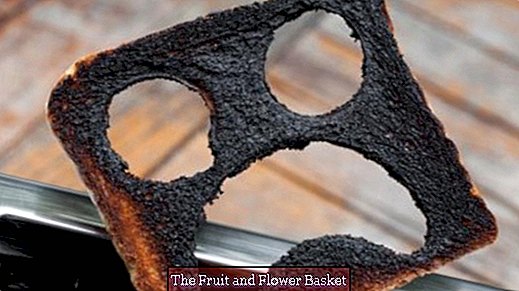Acrylamide: how unhealthy is it really?
What is acrylamide?
The chemical compound acrylamide belongs to the group of amides that are derivatives of carboxylic acids. Although the substance has long been used for the production of art and dyes, it was only in 2002 in the interest of the public. Researchers discovered acrylamide in certain foods, which is why studies on the effects of the substance on the human organism started.
What is acrylamide and how is it made?
Acrylamide is found particularly in starchy foods such as potatoes, potato chips, French fries and in cereal products such as biscuits, cornflakes and crispbread. A similarly high content of acrylamide was demonstrated by experts in coffee, gingerbread, speculaas and nuts. If potato and cereal products are heated to more than 120 degrees Celsius, the acrylamide content increases significantly. Overheating during baking, roasting, frying or roasting produces acrylamide during the so-called Maillard reaction. The amino acid asparagine, which is contained in high amounts in potatoes, forms a very important starting material for the chemical reaction. Sugar (glucose and fructose) additionally promotes the formation of acrylamide.
In addition to carbohydrate-rich foods, there is a high proportion of acrylamide in tobacco smoke.
How unhealthy is acrylamide really?
To date, it is not clear whether and how acrylamide in food endangers human health. However, long-term studies in rats and mice show that acrylamide increases the risk of cancer and changes the genetic material. Whether and to what extent this danger also applies to humans, could not be clarified so far. The World Health Organization (WHO) considers acrylamide as likely to be damaging and carcinogenic.
Can the intake of acrylamide be reduced?
Since 2002, there have been efforts in politics and food industry to reduce acrylamide levels in food. In some cases this has been achieved, but in some goods the acrylamide content is still very high.
The complete avoidance of acrylamide containing foods is not necessary. However, reducing the intake of the substance is recommended by both the WHO and the Consumer Center. Consumers can do some things to prevent a possible health risk from acrylamide.
As the acrylamide content increases with temperature, foods should not be heated too much. The rule of thumb applies: Gilding instead of charring, The lower the temperature, the lower the formation of acrylamide. In addition to the temperature, the water content of a food also influences the formation of acrylamide. The drier a product, the more acrylamide forms on heating. Cooked, cooked or steamed food contains little or no acrylamide. Roasted potatoes should be prepared from pre-cooked potatoes. If some margarine or butter is added to the oil, the water content can be increased. Meat and fish dishes are harmless. When preparing fries in the fryer, keep the temperature and frying time as low as possible. If the fries are cooked in the oven, a maximum temperature of 200 degrees is recommended. Baking paper can help to limit the tan. For biscuits, baking soda or soda should be used instead of staghorn salt as a means of impulse. Roasted almonds lead to a particularly high formation of acrylamide. The acrylamide content is also lowered when an egg or egg yolk is used in baking. In order to keep the acrylamide in the body as low as possible, it is generally advised to take food such as chips, French fries or roasted breakfast cereals a maximum of once a week.
Even though the effects of acrylamide on health have not yet been fully explored, every consumer can decide for themselves whether and how far they want to play it safe and change their diet.





